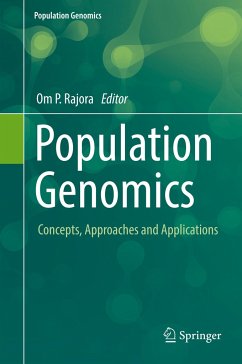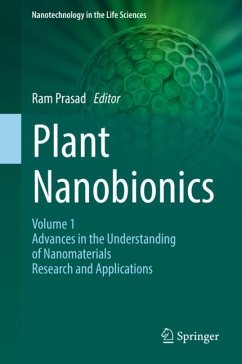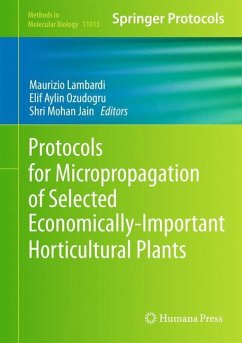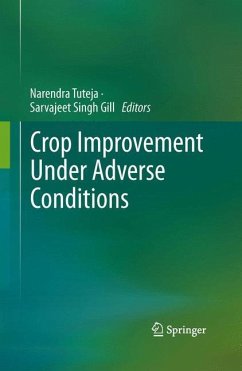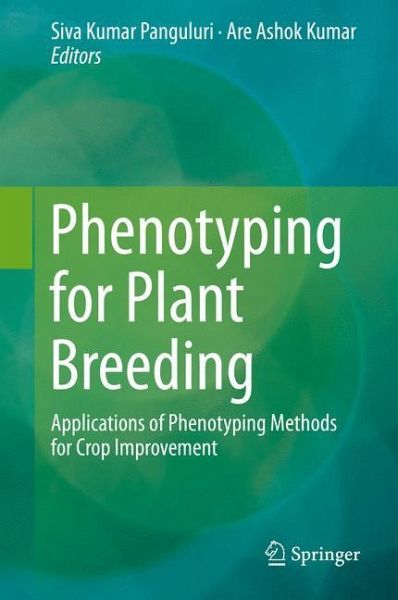
Phenotyping for Plant Breeding
Applications of Phenotyping Methods for Crop Improvement
Herausgegeben: Panguluri, Siva Kumar; Kumar, Are Ashok

PAYBACK Punkte
57 °P sammeln!
This book describes the best phenomic tools available for improving the major traits in select crops. It serves as a useful guide to practicing plant breeders to use appropriate phenotyping methods.
Plant phenotyping is the thorough assessment of plant traits such as growth, development, adaptation, yield, quality, tolerance, resistance, architecture, and the basic measurement of individual quantitative parameters that form the basis for understanding of traits. Genetic approaches to understand plant growth and development have always benefitted from phenotyping techniques that are simple, rapid and measurable in units. The forward genetics approach is all about understanding the trait inheritance using the phenotypic data and in most cases it is the mutant phenotypes that formed the basis for understanding of gene functions.
With rapid advancement of genotyping techniques, high throughput genotyping has become a reality at costs people never imagined to be that low, but the phenotypic methods did not receive same attention. However, without quality phenotyping data the genotyping data cannot be effectively put to use in plant improvement. Therefore efforts are underwayto develop high-throughput phenotyping methods in plants to keep pace with revolutionary advancement in genotyping techniques to enhance the efficiency of crop improvement programs. Keeping this in mind, we described in this book the best phenomic tools available for trait improvement in some of the world's most important crop plants.
With rapid advancement of genotyping techniques, high throughput genotyping has become a reality at costs people never imagined to be that low, but the phenotypic methods did not receive same attention. However, without quality phenotyping data the genotyping data cannot be effectively put to use in plant improvement. Therefore efforts are underwayto develop high-throughput phenotyping methods in plants to keep pace with revolutionary advancement in genotyping techniques to enhance the efficiency of crop improvement programs. Keeping this in mind, we described in this book the best phenomic tools available for trait improvement in some of the world's most important crop plants.









